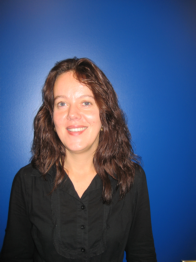Electrokinetic transport of DNA in nanoslits
Promotion date: 30. October 2009
Promotor: Prof. Dr. Ir. Albert van den Berg
Assistant Promotor: Dr. Jan Eijkel
| The electrokinetic transport of λ-DNA and Litmus DNA in nanoslits is described. Fused silica nanoslit devices of different height were used for the experiments. Next to a field dependent mobility, the mobility of λ-DNA is higher when comparing to Litmus DNA in the 20 nm high nanoslits. We also find in these nanoslits that the λ-DNA molecules moved in an intermittent way in electrical fields of 30 kV/m, whereas the Litmus molecules moved in all fields in an intermittent way. The mechanism of this intermittent movements has not been unravelled yet. Also very interesting is that the mobility at a DC field of 30 kV/m decreases at the heights of the nanoslit in the order of 20 nm, 60 nm and 120 nm for the λ-DNA molecules. Currently no explanation is available for this observation. Next to these experiments, we also manufactured a nanoslit device of which one side has a pattern of opposite charges. Hopefully, this type of device offers new possibilities, for both fundamental and separation applications. |
Was there a moment of special importance during your thesis project?
From the start, nano-imprinting techniques played a central role in manufacturing a nanopatterned nanoslit. This line of research turned out to be more difficult and uncertain as expected. Parallel to this we started measuring the DNA molecules travelling through nanoslits, while subject to various electric field conditions. The behaviour presented, was unexpected in some cases, resulting in new separation ideas. I guess, ongoing fundamental research and improving techniques further, can lead to unexpected separation techniques, for different kinds of DNA-fragments.
Are you going to conduct these research activities (partially) yourselves?
I hope to work on it at Mesa+, for one day a week, in the near future. Hopefully I can test some new chip-concepts myself. However, my main job will be at the Korea Institute of Science and Technology (KIST) in Saarbrücken, as a post-doc the next two years to come. Here, I will work with microfluidic devices, testing applications to be used in industry and diagnostics for example. Next to this I hope to develop my own area of interest.
How did you experience your working period at Mesa+?
A new world opened up to me, I can tell, without exaggeration. It is a wonderful sight, to see and watch fluorescent DNA-fragments travelling through the channels, for example.
Coming from the AMC in Amsterdam, I learned a lot of different lab techniques, here at Mesa+. I learned a great deal from my supervisor Jan Eijkel and Albert van den Berg, also with respect to the theoretical basics. To gain results, one has to cooperate with specialists and be open-minded, as only a multidisciplinary approach leads to satisfactory results. An example of this is the successful collaboration with Jonas Tegenfeldt (Lund University – Sweden), who learned us how to do the experiments with the DNA in the nanoslits, which resulted in our first paper. The Nano2Life network was very useful, since it funds this kind of international collaboration.
What, in your opinion, is important for Mesa+ to remain a successful institute?
First of all, the annual Mesa+ day, is fantastic. It is great to hear colleagues present their work and discuss different aspects of nanotechnology in an informal manner. It reflects the Mesa+ atmosphere: the multidisciplinary approach, the easy access one experiences in asking colleagues for advice and ideas, and the understanding of the academic way of working, including the patience needed to come to results in the end.
More in general, I think, the institute can play an active role with regard to the acceptance of nanotechnology in society. One of my thesis propositions describes gene therapy, for example, was considered as an alarming technique to the public. Now, nanotechnology has the same effect, more or less. I think it is important to show the possibilities of nanotechnology in a fair manner, and to also address the risks involved as well.

